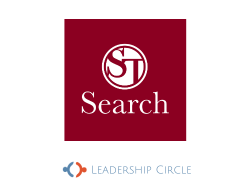By taking the time to identify potential pitfalls before implementing change, leaders are more likely to create stakeholder buy-in and, ultimately, success in their change efforts.
The pressures on today’s independent school leaders are many: an uncertain economy, contentious parent-school relationships, navigating community polarization, and faculty burnout to name a few. But perhaps one of the most daunting challenges is navigating ambiguity. Despite the adage that “the only constant is change,” many leaders feel unprepared to manage change in their organization – whether it be faculty transitions, adopting a new policy, addressing an accreditation recommendation, or launching a new strategic plan implementation.
In his book Leading Change, John P. Kotter highlights an eight-stage process of creating major change, which includes developing a vision and strategy, communicating the change vision, and anchoring new approaches in the culture. He also shares the common errors in the change process, such as underestimating the power of vision, under-communicating the vision, and neglecting to anchor change in the existing culture. Kotter’s change theory holds true across sectors and it can be tailored to particular industries. In our experience working with clients to implement strategic initiatives and accreditation recommendations, we have identified several nuanced elements of the process.
Below, we highlight four pitfalls of managing change in independent schools:
1. Leaders and trustees address symptoms of problems not root causes.
Here is a dysfunctional recipe to eliminate the symptoms of problems rather than address their underlying root causes. Use at your own risk. Mix the pressure for answers with the urgency for action. Pour in an abundance of data identifying performance gaps. Create a plan and stir until frothing. As an example, a school rushes to invest more money in a new digital marketing campaign at the urging of the board of trustees because enrollment is down. But upon further consideration, the leadership team and board realize that the numbers only reveal that a marketing problem may exist. What if the root cause was dissatisfied students and parents because of a middle school social issue and the perceived lack of rigor in lower school math? No amount of marketing is likely to counteract those attrition factors. Without digging down to root causes, school leaders are likely to exhaust themselves playing an infuriating version of Whack-a-Mole with symptoms of an underlying problem.
2. Leaders and trustees risk being blinded by preferred solutions
Leaders are under tremendous pressure to come up with solutions. More than 40 years ago, decision theorists Michael Cohen, James March, and Johan Olsen immortalized this reality in their paper, A Garbage Can Model of Organization Choice. In it, they described observing that decision makers often generate preferred solutions before identifying or analyzing problems. In our consulting work, we regularly attend board meetings. As was the case in the aforementioned example, a trustee who leads a digital marketing company often identifies that the critical shortfall in the budget is due to…a lack of savvy digital marketing. A trustee whose middle school child is struggling in math jumps to the assumption that a retention issue in the lower school is due to the perceived lack of rigor in the math curriculum. We also see enormous pressure among senior leaders to adopt “best practice” solutions simply because they are considered hallmarks of effective schools. Indeed, the push to implement best practices has a profound impact on stakeholders’ commitment to change. For example, the quick adoption of a new curriculum without good process can leave faculty wondering: What problem are we trying to solve by pivoting to this program? Why are we doing it so quickly? Are we sure we should move away from what seems to have worked in the past? A school might be struggling with outdated pedagogy, digital marketing, or rigor in its mathematics program, but how the school considers such possibilities matters. Leaders and trustees should be mindful of their preferred solutions and remain open to the wisdom that emerges from thoughtful inquiry if they want to be effective stewards of the institutions.
3. Data does not equal knowledge.
Leaders have access to lots of data – demographic, student performance, enrollment, financial. But as Michael Fullan so aptly points out in Leading in a Culture of Change, data is information not knowledge. Where do knowledge, insight, and understanding come from? They come from dialogue among dedicated professionals, making meaning possible. In fact, dialogue is such a fundamental part of the change equation that Fullan includes “knowledge sharing” as one of five key elements of leading change. Having access to the data is one piece of the puzzle. Making mission-driven, data-informed decisions takes time, intentionality, and process acumen.
4. Structural change isn’t easy; cultural change is a lot harder.
Organizational cultures emerge as we solve real problems, according to observations by Edgar Schein in his book Organizational Culture and Leadership. The solutions become part of the “way we do things” in our institutions. Culture represents our deeply held assumptions about what is right and proper, so much so that we teach these beliefs and practices to newcomers (e.g., “That’s not how we do that in our school.…”). Each person in the school community enforces the culture or nudges it in a new direction.
While it is certainly not easy to change structures, such as establish a new program or alter the school schedule, it is far harder to change people’s beliefs and assumptions — and their behaviors. Often, the most impactful changes require systemic cultural shifts over time.
How can independent school leaders analyze the likelihood of success for change? In their book Organizational Transitions, Beckhard and Harris acknowledge that resistance to change should be expected and offer the following formula to determine if a change is plausible:
A + B + D > Z
A= Dissatisfied with the way things are;
B= Shared vision of the future;
D= Know some first steps
Z= Costs – economical, psychological, and emotional
In this model, A equals dissatisfaction with the way things are. Leaders must first determine if there is opposition to the status quo within the organization before launching a new initiative. Next, B equals a shared vision for the future. As Kotter points out, people are more willing to embrace change when leadership has articulated a clear vision and taken time to build understanding among stakeholders. D equals knowing some first steps. People tend to be more comfortable with change when they not only understand the reason for the change, but that the first few steps are manageable. A + B + D must be greater than Z – the perceived costs of the change, to those in the organization. Costs can be defined in different ways. For some stakeholders, the costs might be emotional - such as losing a long time colleague due to enrollment shifts, while a psychological cost could be the loss of a preparation period due to a schedule change.
As a way to put Beckhard and Harris’ formula into action, we suggest leaders consider the following questions when thinking about the people in their community who most need to support their change:
• Will people see a need for the change you’re proposing?
• Will they agree on the direction you have set?
• Will they agree on the first few steps to start the change?
• What risks or problems will they perceive with the change?
• Who will be the “winners and losers” as a result of the change?
These questions offer a starting point for a discussion about the value of a potential change, how it might be experienced differently among the school’s constituencies, and what pitfalls might be laying in wait on the path to implementation.






















 .
. 
